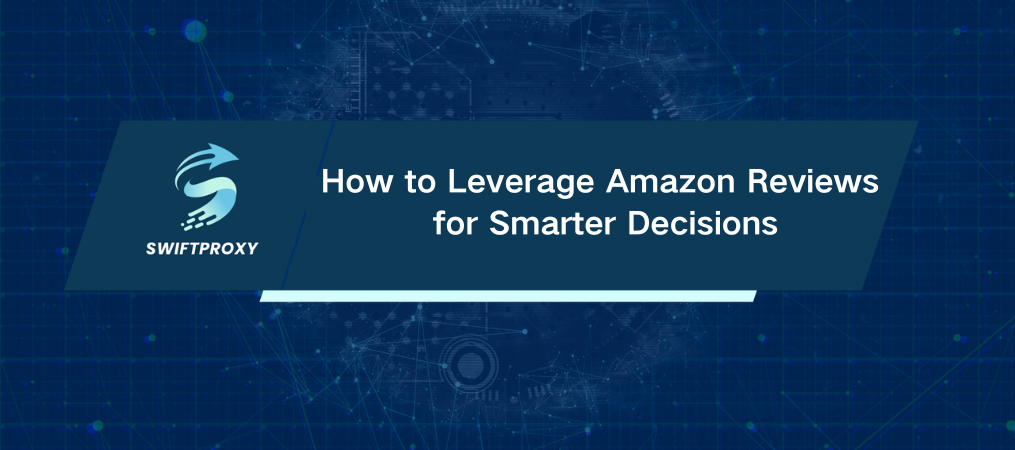How to Leverage Amazon Reviews for Smarter Decisions

Amazon reviews are a goldmine of customer insights, offering a direct line to what buyers love, loathe, and expect from products. With over 310 million active accounts, the potential for business growth is immense. So, how do you tap into this treasure trove? By scraping Amazon reviews efficiently. Let's break down the steps, uncover the tools, and highlight what you need to do to get actionable data fast.
Introduction to Amazon Reviews Scraping
At its core, Amazon review scraping is the process of extracting customer feedback from product pages. Whether you're a developer, marketer, or simply a data enthusiast, scraping allows you to gather tons of review data—ratings, text, reviewer details, timestamps, and more—all in one go. This information is crucial for businesses looking to:
· Analyze customer sentiment
· Identify trends and product gaps
· Refine marketing strategies and product development
But here's the kicker—over 310 million active Amazon users mean your data is potent. It can revolutionize how you approach product innovation and customer engagement.
How Does Amazon Review Scraping Function
Think of scraping like sending a robot (bot) to do the heavy lifting. These bots send requests to Amazon's product pages, parsing the data like a seasoned analyst. But scraping Amazon isn't a walk in the park. Managing pagination (for those long product lists with hundreds of reviews) and staying under Amazon's radar are the real challenges.
Here's where proxies come in handy. They mask your requests behind different IP addresses, helping you avoid detection by Amazon's anti-scraping systems. It's an essential tool to stay in the game without triggering blocks or bans.
Types of Scraping Tools
· Custom-Built Scrapers
If you're comfortable coding, tools like Scrapy, Beautiful Soup, or Selenium are your best friends. They let you tailor your scraper to meet your specific needs, such as filtering reviews based on ratings or extracting only from a particular product category. But keep in mind, they require constant updates, especially when Amazon changes its layout or anti-scraping defenses.
· Third-Party APIs
For those who want a simpler, more stable solution, Amazon review APIs are a solid choice. These services handle most of the heavy lifting, including proxy management and dealing with CAPTCHA. However, they come at a price, and usage limits can be a factor depending on your subscription plan.
Saving the Data
Once you've scraped your reviews, how do you store them? The answer depends on how big your operation is:
· Local Storage: If you're scraping small amounts of data or running a personal project, a CSV, JSON, or Excel file will do the job.
· Database Storage: For larger operations, use databases like MySQL, PostgreSQL, or MongoDB. These allow for efficient querying and data management.
· Cloud Storage: For scalability and remote access, cloud solutions like Amazon S3 or Google Cloud are ideal. These are great when you need your data to be available across locations or on a massive scale.
· Data Lakes: If your scraping operation is on a truly massive scale, consider a data lake. It stores vast amounts of raw data and supports big data technologies.
Legal Considerations to Keep in Mind
Scraping is legal, but tread carefully. Amazon's terms of service prohibit automated access, so scraping without permission can breach these terms. While scraping publicly available data may not violate U.S. law, you still need to follow the rules to avoid running into legal trouble.
How to Avoid Getting Blocked by Amazon
When scraping Amazon, staying under the radar is critical. Here's how you can do it without raising alarms:
1. Use Proxies: Residential proxies are your best bet. They mimic real users and make it harder for Amazon to identify your scraping activity.
2. Throttle Requests: Don't bombard Amazon with a thousand requests in one minute. Spread them out to mimic human browsing behavior.
3. Use Realistic User Agents: Always update your user agent strings to avoid detection.
4. Handle CAPTCHAs: CAPTCHA-solving tools can help you get past this common obstacle.
5. Respect Rate Limits: Amazon can track the frequency of your requests. Make sure to space them out and avoid scraping during peak hours.
Final Thoughts
Amazon review scraping isn't just about gathering data; it's about gaining insights that drive meaningful decisions. Whether you're refining a product, tweaking marketing campaigns, or analyzing competition, the data you collect can elevate your strategy to new heights.
Just remember, while the web is full of opportunities, ethics and legality must always be top of mind. Stay smart, stay ethical, and use scraping tools to unlock invaluable insights for your business.

















































